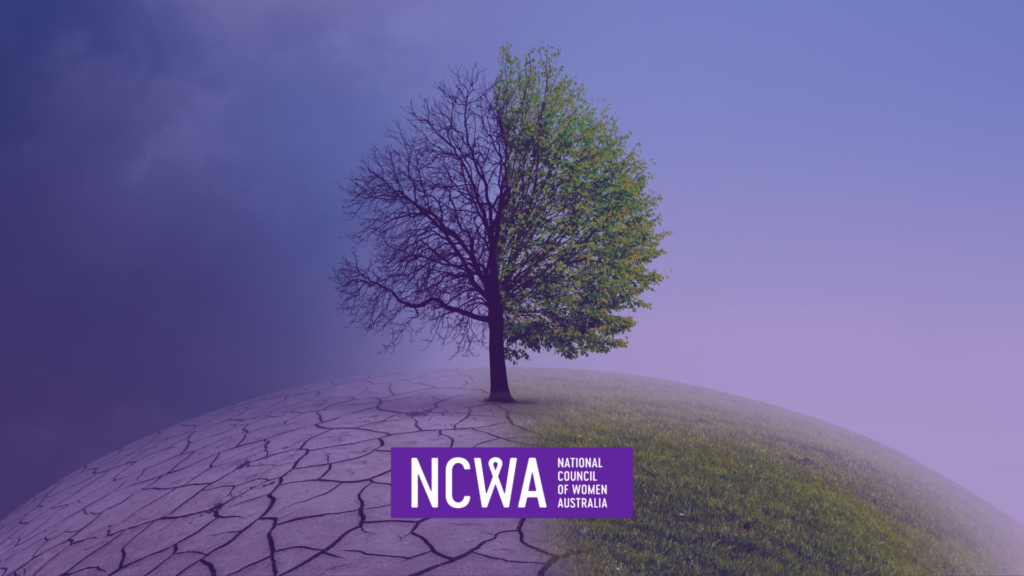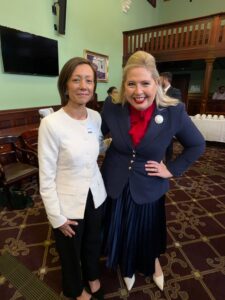Climate Risks Are Above Politics. Families Deserve Urgent Action
“Climate Change Risks’: Report on the National Climate Risk Assessment report”
By Wendy Rainbird, September 2025.
Changing hazards
“Australia’s climate is changing and will continue to change into the future. The country is likely to experience more intense and extreme climate hazards, and in some cases in areas where people and places haven’t experienced these hazards before.
Climate science indicates that our future extreme weather is likely to differ significantly from the past. Changes in the timing, duration, intensity and spatial patterns of hazards are likely, with many events occurring more frequently, in combination or affecting new locations.
The change in distribution, timing and severity of extreme weather events means that historical observations on their own are not likely to be a good indicator of future risk.
Australia currently experiences compounding and cascading hazards, and this is going to increase.
Concurrent events, and reduced time between severe events will become more common.”(Ref. https://www.acs.gov.au/pages/national-climate-risk-assessment)
Risks to people
“Individuals and households already disadvantaged are the most vulnerable to the impacts of a changing climate. Actions that address underlying disadvantage can reduce the impacts of climate change.” (My comment: in many cases this will impact women and girls.)
“Aboriginal and Torres Strait Islander peoples will experience unique impacts from climate change. The changing climate threatens the health of Country, access to Country and could challenge self-determination and have flow-on impacts on their social and physical health and wellbeing.
Extreme heat, floods, bushfires, poor air quality and communicable diseases will escalate health risks. Those with pre-existing health conditions, including mental ill-health, are most at risk. This includes the very young and our older populations. People who work outdoors will also be at increased risk.”(opcit)
“The loss of as many as 2.7 million work days a year in sectors like mining, construction and agriculture where work can’t safely be done during extreme weather”
Risks to places
“Climate impacts are experienced differently across Australia. There are several key areas that have been identified as watchpoints:
Sea level rise and increased coastal hazards will significantly impact coastal communities and cities. By 2050, the number of coastal communities located in high and very high risk areas nationally will increase. If populations remained as they are today, this would equate to >1.5 million people living in areas that will experience sea level rise and coastal flooding risks by 2050.
Northern Australia is likely to experience escalating challenges as its proneness to hazards increases as the global temperature rises. This will put pressure on health, critical infrastructure, natural species and ecosystems, and primary industries. It will also pose additional challenges to emergency responders.
Outer urban areas of cities stand out as watchpoints. These areas are particularly susceptible to adverse impacts because of their circumstances (location, demographics, proneness to hazards).
Remote communities are vulnerable today due to limitations in power and telecommunications supply and weak supply chains. This vulnerability will increase as critical infrastructure and supply chains face increased disruptions.”
(Ref. Australia’s National Climate Risk Assessment: An Overview | 2025p.iii)
“Women care about their children and grandchildren and
would see the need for reductions in greenhouse gas emissions
to avoid making the risks worse.”
Risks to our way of life
“Extreme events will affect some communities more than others. High-risk communities are likely to experience domestic migration, which in turn could disrupt local economies, social networks, traditional identities and cultural heritage.
An escalation of risks in one system is highly likely to have a ripple effect across sectors, services and structures. Extreme events will lead to property damage, increased insurance costs and even loss of homes, particularly in coastal areas vulnerable to sea level rise and erosion. These impacts will contribute to the cost of living, placing further stress on household budgets.
Australians will be impacted by loss of important ecosystems and species by the middle of the century, without implementing direct intervention and adaptation actions. Ecosystems provide clean air and water, food security through pollination, raw materials for medicines, natural disaster protection, and regulate the local climate. Australia’s plants and animals have evolved to fit their local climatic conditions.
More frequent and more intense extreme events will affect the way of life in different ways across Australia – from impacts to sport and recreation, to unreliable infrastructure, like energy sources during heatwaves. There will be additional pressure on emergency responders and defence resources. Increased severe floods and bushfires will degrade water quality, placing pressure on already limited water sources.”(opcit)
“The risk of vector-borne diseases (e.g. malaria and dengue fever) will rise as temperatures, rainfall, and floods increase, straining the healthcare system.(opcit p.iv)
Crop yields will decrease with more drought (e.g. southwest Western Australia) and increased susceptibility to fire (e.g. southern and eastern Australia).”p.iv
Water availability and accessibility for towns, ecosystems and agriculture may become limited due to rising evapotranspiration in inland regions and changes in annual rainfall.”p.iv
What we need to do
These are quotes from the National Risk Assessment, and are not all that is in the Risk Assessment.
They are serious enough and we need to be informed, and putting aside party politicking, “take urgent action to combat climate change.” SDG 13
Women care about their children and grandchildren and would see the need for reductions in greenhouse gas emissions to avoid making the risks worse.
National Councils of Women in Australia are apolitical, and these risks are above politics because we care about our families and the risks are so serious.
The report can also be viewed HERE




